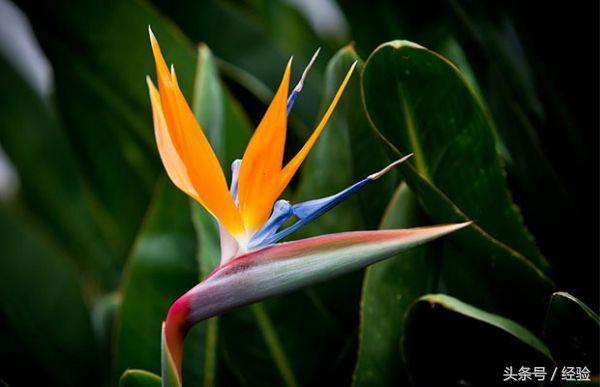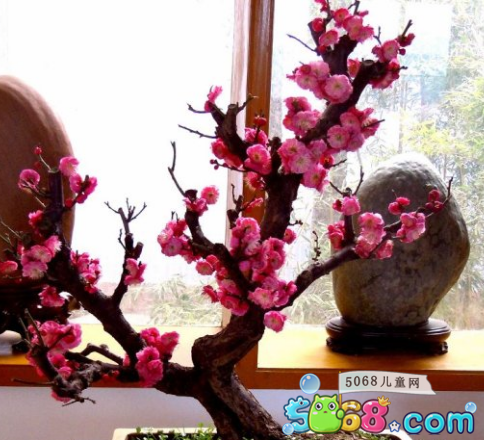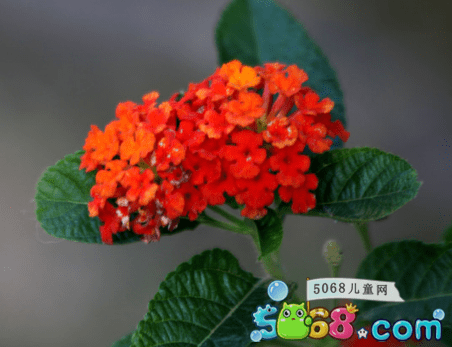How to plant Clematis paniculata
Breeding Methods and Points for Attention of Stagelaria
Strelitzia reginae, also known as the flower of the bird of heaven and the flower of the bird of heaven, is also a good precious flower in China. Its flowers are very delicate, solemn, generous, charming, known as indescribable flowers.

Use Strelitzia
1. Decorations: Staggeria is always green, the leaves are large, and the overall image looks like a bird's head, so there is also a bird of paradise name. These flowers are beautiful and novel and can be used to decorate gardens and flower beds. In flower and floral art, the Staggeria is also good.
Symbol: Staglitzia has a very beautiful symbol and meaning. Therefore, when people visit relatives and friends, they often give Strelitzia to their friends and express their good wishes to some people. Staggeria is a flower in Los Angeles, USA.
WATCH: St. Regis is a very elegant and beautiful plant. There are several flowers, all of them on peduncles. Below is a buddha, the flame is green, the edges are purple, the scorpion is orange, and the petals are dark blue. Color, very ornamental value.
Why did he call the bird of paradise heaven?
Queen George II of the 18th century, Queen of Queens, loved this flower and thought its flower shape was particularly similar to the crest and beak of a bird, and her birthplace was also known as Bird of Paradise Village, so she gave it the name "Bird of Paradise", which later became known as Bird of Paradise.
Growth Habits of Strelitzia reginae
Birds of paradise originated in southern Africa and belong to subtropical long-day plants. Warm, humid, sunny. It fears colds, avoids heat, avoids drought, avoids jealousy, needs loose and fertile drainage, and has a pH of 6 - 7. The optimum temperature for sandy loam during the growing season is 20-28°C. It is grown in parks and flower beds in large cities in southern China and in greenhouses in the north.
How to solve the splitting of St. Regis leaves?
How to solve the splitting of St. Regis leaves?
1. Root injury: If the roots of St. Regis are damaged, it will affect the absorption of nutrients and water by the azalea root system, resulting in yellowing of the leaves. At this point, you can change a pot of St. Regis.
2, insufficient fertilizer: lack of nutrients causes leaves to crack and turn yellow. Apply fertilizer in time, and remember to apply more each time you apply less.
3, the soil pH is not suitable: the soil is alkaline, the new leaves of St. Regis growth are easy to turn yellow. Adjust the pH of the soil, or simply change the pottery to St. Regis.
4, sun exposure: summer should not be exposed to St. Regis, otherwise the leaves will turn yellow in the hot sun. Strelitzia should therefore be placed in shelters and exposed to astigmatism.
pot culture method of Stagelaria
1. Potting soil: 5 parts humus soil or peat soil, 3 parts garden soil, 1 part rotten sorghum loam and 1 part coarse sand are mixed to make the soil for planting St. Regis.
2. Temperature: Strelitzia reginae grows in an environment of 12°C to 25°C, and the room temperature in winter should be kept above 5°C.
3, watering: summer watering should be sufficient, spring and summer season often spray water on the leaves, and sprinkle around the flowerpot, late autumn watering should be reduced, winter watering should be controlled.
4. Fertilization: Fertilize once every half month. Fermented rice water or soybean steeping solution, preferably fermented at home. In the process of flower formation, 0.5% calcium superphosphate can be added to the fertilizer.
5, lighting: there should be no less than 4 hours of direct light every day. During winter flowering, plenty of sunshine helps increase flower production.
Staggeria pot plant
Staggeria pot plant
Staggeria pot plant
How to make Strelitzia bloom quickly?
Sowing and propagation methods of Strelitzia reginae
1. Sowing time: The best season for seeding seedlings is late March of each year.
2. Seed treatment: Before sowing, soak seeds in 0.3% potassium permanganate or 50% multi-bacterial wettable powder for 500 hours and 2 hours, and then soak in warm water at 40℃ for 3 days.
3, seedling matrix: grass soil, slag and fertile soil in a ratio of 1:1:2 made of bed soil.
4, seedling environment: seedling temperature is maintained at 25~30°C, air humidity is 60%~70%, light is 5000~10000Lx.
5. Transplantation: Disinfection of soil. After the seedlings emerge and grow into two leaves and a heart, they can be transplanted very well, and the spacing between plants is 10×10cm.
6. Maintenance: watering after transplanting seedlings, pay attention to shading. Apply fertilizer every 5 days until you can remove shade after a fall. Cover the film with frost before winter.
7. Planting: After 2 years, seedlings can be planted, preferably from April to May for selection.
8. Watering: spray water on the leaves every day. Add 0.2% potassium dihydrogen phosphate or 0.2% potassium permanganate to water. Transplanted seedlings usually begin to flower within 3 to 4 years.
Knowledge of summer conservation
Summer temperature: If the temperature reaches 25°C, it can be cultured in the basement and kept between 15°C and 25°C, suitable for growth.
2, summer water and fertilizer: control water, prevent root rot. Every other week, a thin, fertile water made from vegetarian flower manure made from inorganic salts is applied. When the higher temperature is below 25°C, let it gradually receive more direct sunlight.
3. Lighting: Basement culture has no light. During the day or evening, the illumination of the St. Regis can be received by illumination. Square meters equipped with 100 watt incandescent lamps. The bulb is preferably suspended 50cm above the plant.
How do you grow Staggeria in winter?
1. Temperature: St. Regis afraid of catching cold. It needs to be brought indoors in the north in mid-October. Store indoors in a sunny place at room temperature of 10°C.
2, moisture: Staggeria afraid of drought, taboo, watering needs to increase or decrease according to the season, summer watering more, autumn watering, reduce the amount of watering, control winter watering, to keep the soil dry should be.
3, lighting: In addition to summer, St. Regis needs sufficient light, if the light is insufficient, it will affect the growth and even flowering of the plant. Appropriate shade in summer.
4, fertilizer: St. regina revives once every half month, apply thin pizza fertilizer water until flowering, add 0.5% calcium superphosphate to fertilizer, can make flowers bloom more vivid, stop fertilizing after mid-October.
Why does Strelitzia not bloom?
1. Insufficient light: direct sunlight in summer can cause plants to lose water and delay flowering; if the light is too weak, it will affect photosynthesis and delay flowering.
2, fertility deficiency: insufficient nutrition will delay flowering. Fertilization should be applied every half month during the growing period. However, if the plants are overgrown, consider reducing fertilization. 0.2% potassium dihydrogen phosphate solution can be used as fertilizer.
3, the basin is too large: if the potted plant of Stagonia is too much, the fleshy roots will expand and grow, consuming nutrients and affecting flowering.
4, planted too deep: If planted too deep, there is no neck, when the pot changes, it has an effect on the bud, and medium soil has no fleshy roots.
Is Strelitzia Toxic? Suitable for indoor farming?
1. Toxicity: Strelitzia is not toxic. There are many cities in the park that have this flower.
2, living room farming: St. Regis is always green, very beautiful, symbolizing good luck and freedom, so it is most suitable for indoor living rooms.
3, not suitable for the kitchen: kitchen space is small, the air is dirty, not suitable for placing St. Regis.
4, can not eat: many plants have slight toxicity, as long as there is no consumption, ornamental flowers will not be a problem.
Breeding method of Stagelaria
1. Temperature: The most suitable growth temperature is 15 to 25℃, and the growth stops below 8℃. The winter incubation temperature is not lower than 4℃. In the north, flowers are moved indoors or into plastic greenhouses in winter.
2, lighting: St. Regis, sufficient light, if the lack of light is easy to lead to poor plant growth, affecting flowering, pay attention to light.
3, pruning: in order to improve the quality of flower buds, timely remove old leaves, sick leaves and useless flower branches.
4, watering: do not water too much, summer growth and autumn and winter flowering period to ensure sufficient water, early spring flowering reduced watering. Watering once a day in summer and less in winter keeps the soil slightly dry.
5. Fertilization: In the growing season, every 2 weeks or so, active humic acid fertilizer should be applied.
How to make Strelitzia bloom quickly?
1. Replacement basin: Strelitzia reginae seedlings are replaced annually and every 2 - 3 years after formation.
2, choose the basin: replace the basin with a good gas burner, and put a layer of broken tiles or 2-3cm thick coarse sand at the bottom of the basin, which helps drainage and ventilation.
3. Fertilization: Choose loose, humus-rich soil as the culture soil, and add phosphorus, potassium or cake fertilizer as the base fertilizer.
4, control lighting: spring, autumn can be put on sunny, winter needs more light. In summer, you need to cover the shade and place it in bright, diffuse light.
5, control temperature: winter temperature is not lower than 4°C, reduce watering, can be exposed in winter. In areas where winter temperatures are below 4°C, flowers need to be moved indoors during winter.
6, soil moisture: summer, autumn, winter need sufficient water, watering once a day, spray 1-2 times. Water can be reduced appropriately after flowering in early spring. When it rains, pay attention to drainage.
Preventive Measures for Stagelaria Cultivation
1. Light in different seasons: In spring and autumn, flowerpots should be placed in sunny places for cultivation, and in winter they should be more exposed to sunlight, otherwise they will directly affect the growth of leaves and the color of flowers. In summer, plants should be kept in the shade to protect their leaves from burning in the sun.
2. Phosphorus and potassium fertilizer were mainly used in autumn and winter, phosphorus fertilizer was mainly used in autumn and winter. Using potassium dihydrogen phosphate and water in the roots makes plants grow stronger and flowers grow larger.
3, often replace the basin: general seedlings should be replaced once a year, change the soil once, plant formation every 2 to 3 years after the replacement of soil once, spring for sub-plant.
Time: 2019-05-08 Click:
- Prev

Effective methods for maintenance of plum blossom before winter
Plums like to prescribe in the cold winter, but if they are well preserved before winter, then it is helpful to bloom. The following editor will introduce you to the effective methods of plum blossom maintenance before winter. I hope everyone likes it. 1. Plum blossom watering comes autumn before winter comes. At this time
- Next

Culture methods and Disease and Pest Control of Prunus mume
The color of five-colored plums will change with the time of flowering. She can see flowers all the year round and pay attention to the control of diseases and insect pests in the process of reproduction. The following editor introduces the breeding methods and pest control of Prunus mume. I hope it will be helpful to you.
Related
- Fuxing push coffee new agricultural production and marketing class: lack of small-scale processing plants
- Jujube rice field leisure farm deep ploughing Yilan for five years to create a space for organic food and play
- Nongyu Farm-A trial of organic papaya for brave women with advanced technology
- Four points for attention in the prevention and control of diseases and insect pests of edible fungi
- How to add nutrient solution to Edible Fungi
- Is there any good way to control edible fungus mites?
- Open Inoculation Technology of Edible Fungi
- Is there any clever way to use fertilizer for edible fungus in winter?
- What agents are used to kill the pathogens of edible fungi in the mushroom shed?
- Rapid drying of Edible Fungi

